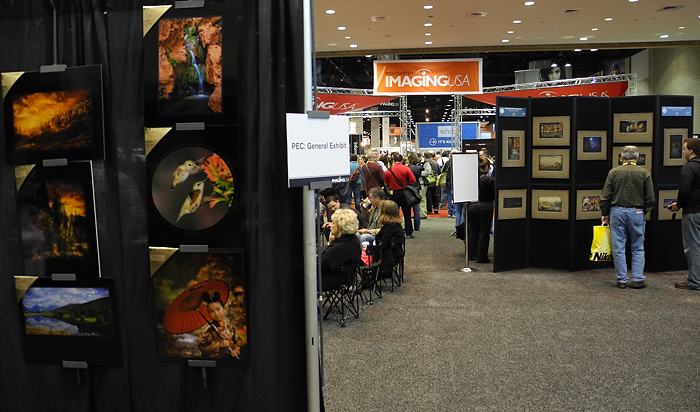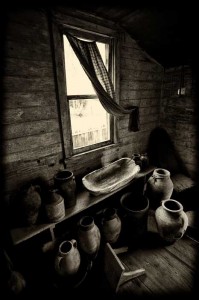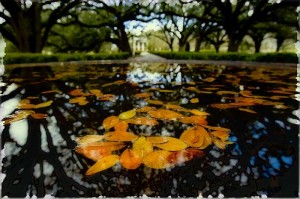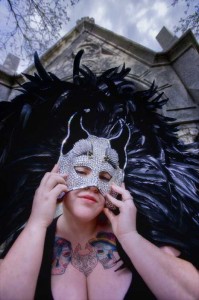I was down in San Antonio for the Imaging USA Conference earlier this week. With some free time Tuesday morning, I took a walk through the print winners, and was struck by how few “straight” prints there were. Considering the state of the photography business these days, though, I shouldn’t have been surprised.
As camera’s have gotten better and better, more people are able to take good pictures. That’s a far cry from twenty years ago. Back then, you had to understand the exposure basics of ISO, shutter speed and aperture, and the effect they had on each other. And you had to know how to focus the lens. With the improved automatic exposure and auto-focus systems of today’s cameras, that’s no longer the case. Plus, you don’t have to deal
with getting film processed and using loupes to go through that film to find the best pictures. And finally, you no longer have to find a custom lab to make corrections and enhancements to photos during printing. That can all be done on your home computer.
For most people these advances have been a great thing. They mean that photography as a creative outlet is a door that’s been opened to everyone. For commercial photographers, those people trying to make a living with their cameras, that door opening has often meant less business for them. Imaging USA is aimed primarily at wedding, portrait and event photographers, and so the vendors were promoting tools for them. That meant not only cameras and lenses, but lighting gear, backdrops, accessories and lots of software. To compete against the neighbor next door with a digital SLR, they’re looking for things that neighbor can’t easily do. And that often comes down to lighting, backgrounds and a unique “look” to the finished photos. And that’s why the print exhibition was so interesting.
Yes, there were a lot of really nice images. But as I said above, most were manipulated in some way. I saw a heavy use of saturated colors, high-contrast,
sharpening and softening, torn-edge borders and some old-photo looks. To help make their work stand out, many photographers are resorting to heavy editing of their images. And it works. They catch your eye. If this was all being done manually, step-by-step in editing software, it would take more knowledge and time than most people want to spend. So there are loads of plug-ins and actions that automate these looks. Looking at them, I realized it had been a while since I’ve played with any of my images this way. Right there I knew what I was going to do when I got home.
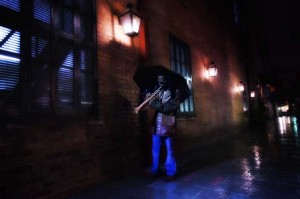
I used Nik Color Efex Pro for this photo of a musician in New Orleans. Photo copyright Reed Hoffmann.
I generally preach, “find ways to spend less time in front of the computer.” Most of us already find ourselves in front of a monitor more hours of the day than we’d like. But there are times when it can be a lot of fun to sit down and waste an hour or two at play, trying new techniques or old ones you haven’t used in a while. So after returning home I sat down and pulled up a group of images from a workshop I led to New Orleans last year, and started playing.
There are a couple of sets of plug-ins that I always go back to when doing this. I’m a long-time fan of Nik software (http://www.niksoftware.com). They first hooked me with their Nik Sharpener Pro software, to automate sharpening of images for screen and print. That saved me hours of tedious work, and gave
great results. Then I tried their Color Efex Pro package, and found a new favorite way to create some amazing looks to my photos. This plug-in set automates image treatments that run from “Cross Processing” to “Infrared” to “Polaroid Transfer” to “Fog” and “Glamour Glows” and on and on. A few of my favorites are “Monday Morning, “Classical Soft Focus” and “Indian Summer.” What I like is that they don’t just give you a “look,” but also let you modify that look to your heart’s content.
I was also a big fan of the “Black and White Conversion” option, but then they introduced Silver Efex Pro, which took black and white creation to an entirely new level. I used it on the plantation kitchen shot here.
My roots in photography go back to photojournalism, so I usually try to keep my photos honest to the scene I was recording. But every now and then, it’s fun to play and experiment with new software packages, or re-visit old ones. After all, with the wet darkroom giving way to the computer, our only creative limit is our imagination. So go ahead, cut loose and go a little wild. Who knows, you may find new life in an old image.

